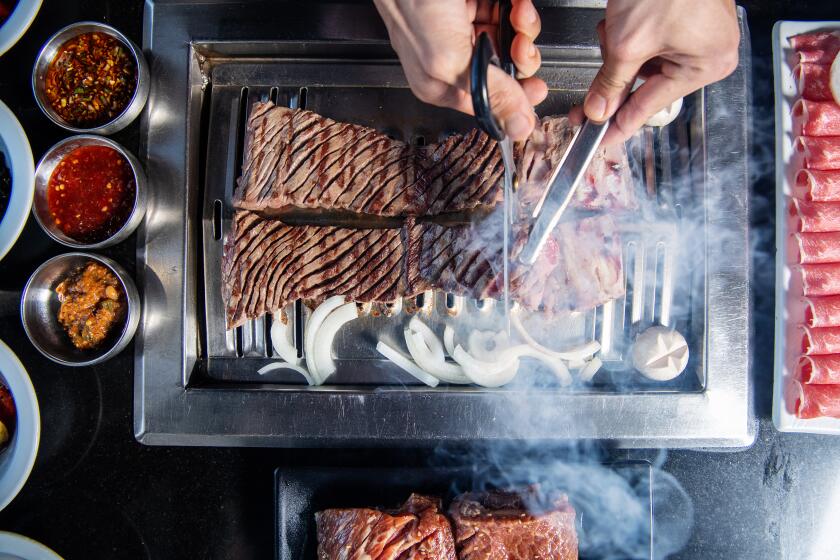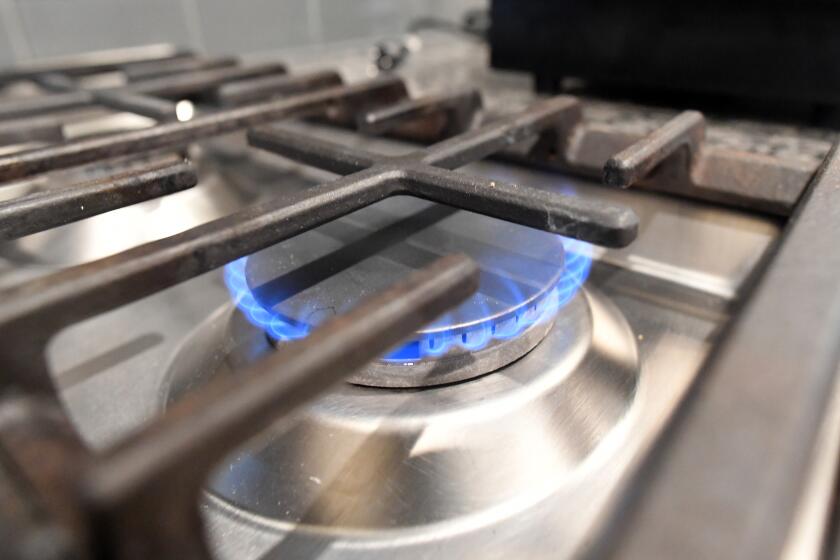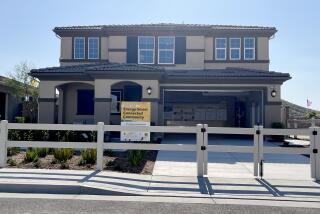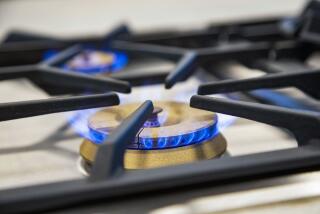We compared gas vs. electric stoves in our L.A. test kitchen. Here are the results

Our tests show the switch from gas cooking to an induction stove may be easier than you think.
- Share via
Los Angeles is on a course to phase out gas-powered living. The L.A. City Council voted in May to ban gas stoves in all new buildings constructed in city limits, joining more than 50 cities in California to do so. Citing the ongoing climate crisis, the council made this decision because emissions from gas hookups powering stoves, furnaces and water heaters contribute to carbon dioxide pollution, which leads to more destructive wildfires, more intense droughts and deadlier heat waves — all things that are a major concern for those of us living in California.
Going gas-free is clearly better for the environment, but gas stoves are still the most common cooktops in the country, and they’re considered vital to certain cuisines and techniques. Switching to induction or electric over time will be a big adjustment. Because we still have many years of gas-stove cooking ahead of us, the L.A. Times test kitchen is currently equipped with both gas-powered ranges and induction cooktops. Each for now has benefits for executing great cooking at home and both are useful in testing our recipes.
All that being said, like most stubborn people asked to change their ways, I’d rather not.
Gas-powered stoves are the standard for me and most professional cooks I know. First, we expect that most people making our recipes at home are using gas. Heat levels are given in high, medium and low because no matter what the dials on your stove say, you can judge the flame from a gas burner by those three metrics with the eye.
Chinese and Korean chefs in Los Angeles are worried that a ban on future gas stoves may alter their kitchens forever.
Gas offers the cook a nimble maneuverability in terms of heat levels that is slower and clunkier with electric. It also allows you to use whatever pans you have, something induction can’t do, because induction requires magnetic material in the pots to react with the copper coils in the stove. And when it comes to the sheer amount of heat gas can produce, it once again bests electric and induction, which can’t reach jet-engine levels of hot for things like searing steaks or making char-kissed stir-fries.
Gas stoves have dominated in our culture mostly because, well, flame casts a certain spell: It’s really alluring to see the power of a flame light up when you sear a steak or set a tumble of vegetables flying out of a skillet with a flip, each piece getting singed by fire. The visuals are just part of the appeal.
All of the above reasons — quick to manipulate heat, ability to offer smoking-hot heat when needed, and versatile use with all pots and pans — have made gas-powered stoves the mainstay for serious home cooks and restaurant chefs for decades. So when the new law takes effect, it will be interesting to see how chefs at restaurants in brand-new buildings, in particular, will adapt. Will the absence of the primal flavors brought about by gas-powered cooking mark the return of live-fire cooking to mimic the same flavors?
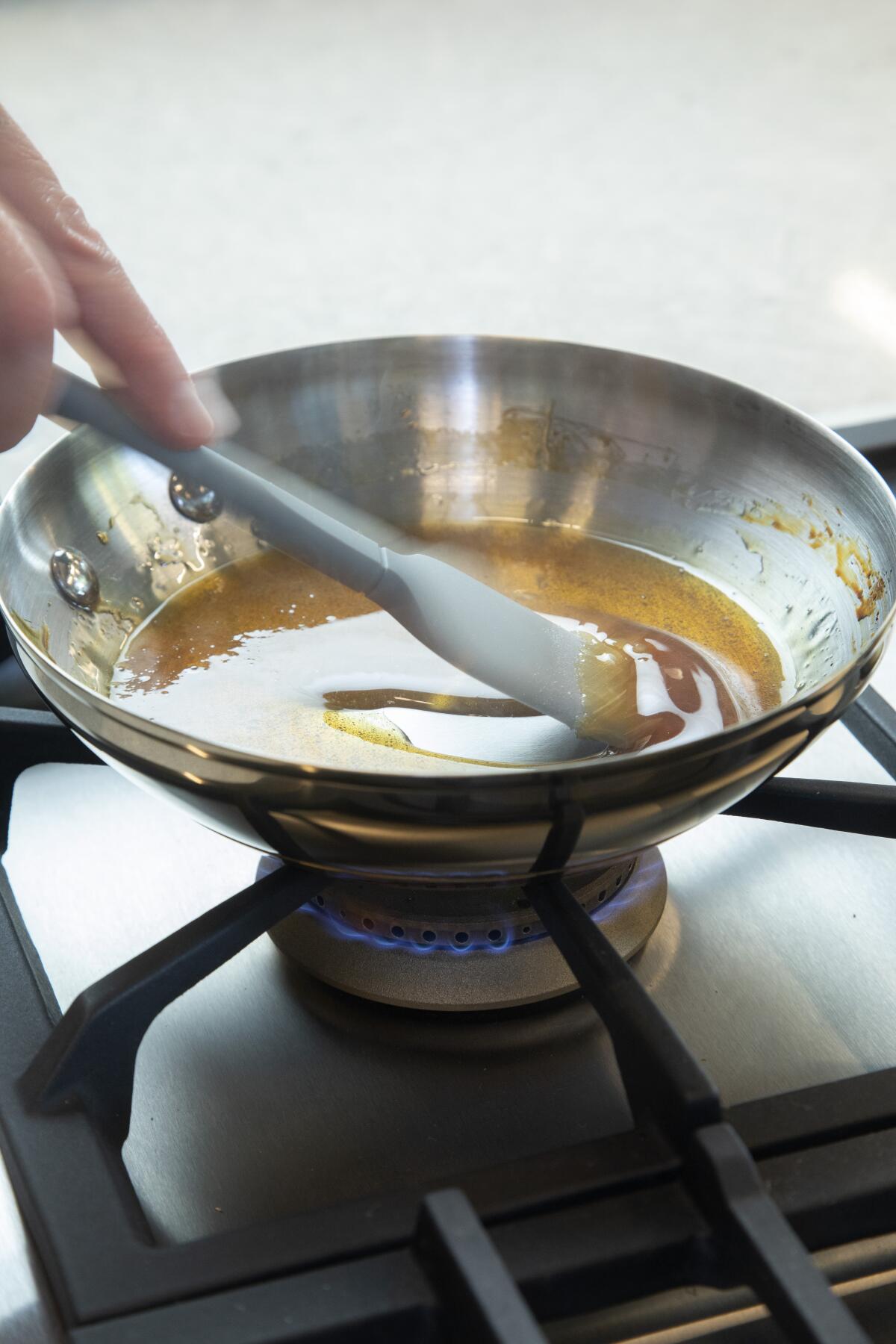
The realities of induction
For all the wonders of gas, I have to admit that it does create a lot of excess heat and energy, which electric and induction stoves do not do. As someone who has lived with tiny apartment kitchens in both New York City and Los Angeles, I can attest to the ambient heating power that can come from a single burner. If it’s wintertime, that heating can be nice. But if it’s hot outside — as it is a lot of the time in L.A. — that can mean every single dinner party I throw requires me to take a shower right before the guests come over. Now imagine the heat in kitchens inside your favorite restaurants.
I’m neither a fan nor a detractor of induction and electric cooking — I get why people use them both — but I have found that although the experience of cooking on them is different from cooking with gas, by and large, you can get pretty much the same results.
Electric cooktops conduct heat thermally, meaning from hot coil to hot pan to your food. This is just like a gas flame, except the heat is concentrated on the bottom of the pan with electric versus wherever the flame touches the pan, which with gas can sometimes be the sides too.
With induction, however, the things you can do are both limited and expanded. Induction cooking works by electric coils reacting with magnetic material in certain pots and pans to transmit heat. This means that the heat transfer is faster than gas or regular electric — that pot of water you need to make pasta will come to a boil faster. It also means that the pans you use will heat up more quickly. Instead of waiting several minutes for a pan on a gas stove to get hot, pans on induction stoves are hot in less than a minute.
Climate change spurred Friday’s unanimous vote by the Los Angeles City Council.
There are drawbacks to induction, of course. You can get the pan hot quicker but it can’t maintain nor reach the heat levels required for stir-frying and steak-searing that gas can. And because induction heat requires certain pots and pans, you may have to buy a new cookware set to use it. However, the ability to maintain more precise temperatures under that high threshold is great for things like simmering, where you want slow and steady heat without having to fiddle back and forth with a hot-spot-prone gas flame.
All comparisons aside, though, I think that most home cooks eventually will be able to adapt their recipes easily to using induction or electric cooktops. Aside from those rare times where I cook a steak, I don’t need that high heat for cooking at home — and let’s be honest, I could live the rest of my life without setting off the fire alarm and having to open every window in my house to dissipate the smoke caused by that single pan.
After some thought, and the idea of cooler kitchen temps in my future as well, I would prefer to go gas-less sooner rather than later. If it’s coming, why not embrace it? We can take the chance to adapt to all its many possibilities, rather than concentrate on the one thing it lacks.
More to Read
Eat your way across L.A.
Get our weekly Tasting Notes newsletter for reviews, news and more.
You may occasionally receive promotional content from the Los Angeles Times.
